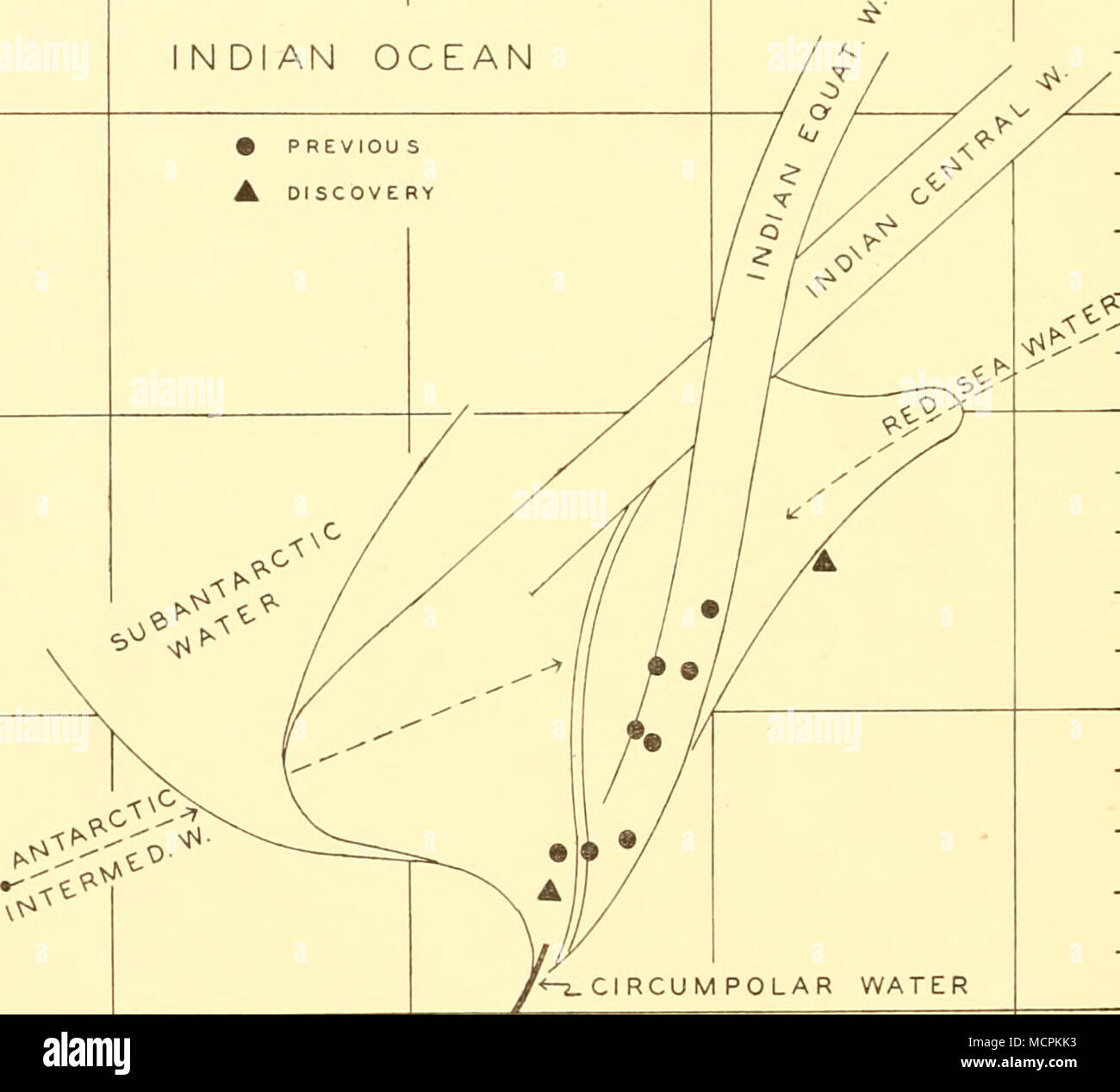. L J J CIRCUMPOLAR WATER -ANTARCTIC .1 I I L BOTTOM J I L W. 34 0 34 5 35 0 35 5 SALINITY %„ Fig. 3. The distribution of Vampyroteuthis infernalis in relation to the water masses of the Indian Ocean. In the Indian Ocean the few previous records are from the Indian Deep Water and upwards into the Indian Equatorial Water. One of the two Discovery records is from the Deep Water. The other, specimen No. 98 from the Somali Basin, is from a region where Red Sea Water is flowing out to join the Equatorial Water. At the present time there are no records from Indian Central Water. The distribution

Image details
Contributor:
The Bookworm Collection / Alamy Stock PhotoImage ID:
MCPKK3File size:
14.3 MB (256.5 KB Compressed download)Releases:
Model - no | Property - noDo I need a release?Dimensions:
2348 x 2128 px | 39.8 x 36 cm | 15.7 x 14.2 inches | 150dpiMore information:
This image is a public domain image, which means either that copyright has expired in the image or the copyright holder has waived their copyright. Alamy charges you a fee for access to the high resolution copy of the image.
This image could have imperfections as it’s either historical or reportage.
. _L J_ J_ CIRCUMPOLAR WATER -ANTARCTIC .1 I I L_ BOTTOM J I L W. 34 0 34 5 35 0 35 5 SALINITY %„ Fig. 3. The distribution of Vampyroteuthis infernalis in relation to the water masses of the Indian Ocean. In the Indian Ocean the few previous records are from the Indian Deep Water and upwards into the Indian Equatorial Water. One of the two Discovery records is from the Deep Water. The other, specimen No. 98 from the Somali Basin, is from a region where Red Sea Water is flowing out to join the Equatorial Water. At the present time there are no records from Indian Central Water. The distribution of Vampyroteuthis in relation to temperature, salinity, and density is further summarized in Fig. 4 in which the new records are indicated in solid black. Empirically the species appears to be restricted to water of salinities between 34-4 and 35-4 %0, of temperatures between 2 and io° C, and of densities between <rt 27-0 and 27-9. Dr E. F. Thompson has suggested that the last